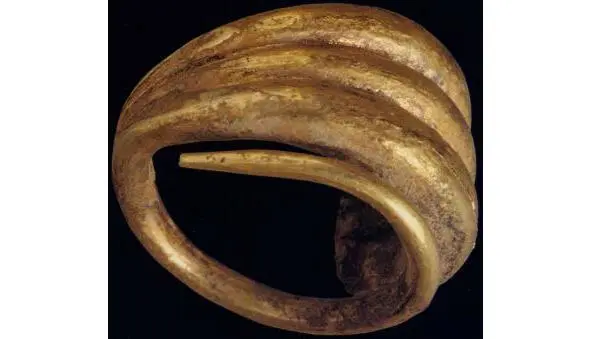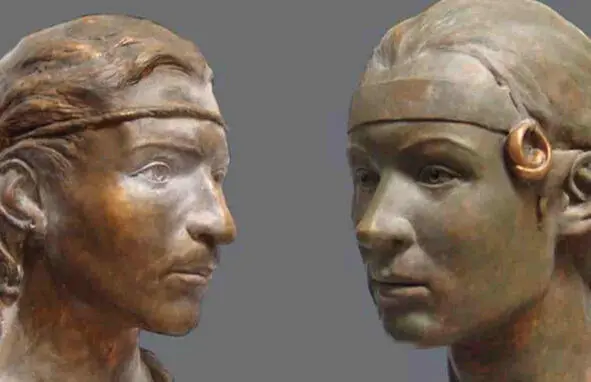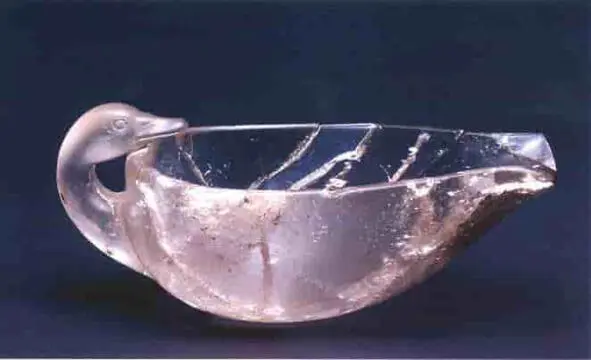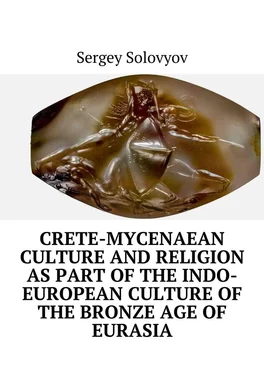Is it correct to say that the Mycenaean century marked the beginning of Hellenic culture? In Greece, not once and not two fell different peoples, including in historical time. Finds of archaeologists show that up to the classical period the continuous development of civilization continued. In the period from 1900—1800 BC. across the whole of Greece began to spread new ceramics with characteristic features, known as gray «minyan» products. The name was offered by Schliemann, who first came across it during excavations in Orchomen. He named it in honor of the Mynyan tribe, which, according to legend, is associated with this city. The name was unsuccessful, because in fact this tribe is not associated with the origin of ceramics. Minyan ceramics are easy to distinguish from all other gray products due to their excellent quality and very specific finishing technique. Most likely, according to Taylor, she was brought to Greece by representatives of one of the nomadic tribes. In the form of vases, a resemblance to metal products is seen in Taylor’s opinion. The ceramic products, similar to the gray minyan ceramics, were found by archaeologists throughout North-West Turkey, they have distinctly expressed signs of TroyVI ceramics, which indicates a homogeneous population of this region of Asia Minor at the beginning of the second millennium BC and the base the sixth settlement around the XIX century. BC. Practically simultaneous appearance of similar ceramics in two separate but not very distant territories suggests that both Troy and Greece were invaded by the same invaders. It is commonly believed that they brought to Greece and one of the forms of the Greek language. The bearers of this culture came from the east, passing through the northern Anatolian plateau in Troy. Indeed, the Mycenaean ceramics are in some ways similar to gray products from the northeast of Iran. The invaders brought with them new types of weapons, primarily cavalry and chariots, which played a decisive role in keeping the occupied territories. For the first time, the horses’ bones were found in the TroyVI along with minyan products, possibly a wave of invaders penetrating Greece, brought with them horses. This theory contradicts the fact that in later times the transportation of horses by sea through the straits that separate Europe and Asia was a dangerous, if not a lethal, operation. For about two centuries, the invaders strengthened their positions, absorbed and integrated the existing culture, increasing their own well-being and strengthening their power, facilitated by coastal trade and piracy. At the beginning of the XVI century. There is an increasing influence of Crete on their culture and, it can be said, the phenomenon known as the Age of Mycenae begins. States of the Mycenaean type, similar to those described in the Iliad, began to form in Athens (although not very significant), and also in Attica. The strongest power Miken showed up in the Peloponnese, where Pylos ruled Messenia, as well as in a group of fortresses in Argolid, dependent on Mycenae. Lakonia lying between these two territories has not been explored, and its Mykene capital has not yet been discovered. So, Taylor relies on the specific Mingyang ceramics in the dating, and speaks of the proximity of the Trojan culture and the Greek (Achaean). Some, the most important elements of jewelry, namely the lobed temporal rings of women’s rings, allow us to put forward a hypothesis about migration of nomadic tribes from the Ural steppes to Asia Minor, Iran and Greece. Now we turn to the dating of the Treasure of Schliemann, and what the researchers base on dating. The treasure itself was in a silver two-handed vessel. It consisted of more than 10,000 items. Most of all there were gold beads – about 1000. And the beads were very diverse in form – and a small beads, and thin tubes, and beads with flattened blades. When was done the reconstruction of the breast pectoral, consisting of these beads, turned out twenty luxurious threads of a necklace, to the bottom of which 47 gold rods were suspended, and in
center was located one very special – with thin slicing. Also unique are the rings, called the temporal lobular rings-the number of parts from two to six. The top rings were made from the materials of the finds, from gold and silver. It is interesting to show the bipartite ring from the Treasure of the Climber of Schliemann Catalog inventory number Аар132, Бз50, П92 F6014 and Аар 133 Бз49, P91 A 6015..

pic.16 Lobular rings from the Treasure of Priam, Pushkin Museum, Moscow
A bipartite gold ring from the Collection of the GIM (Historical Museum). Photo dsc00946. These findings only confirm Taylor’s theory of the advancement of pastoral tribes to Asia Minor and Greece. The find is dated to the beginning of the second millennium BC. Now let’s turn to the finds of Abashevskaya and Andronovskaya kultury. Oni developed in the forest-steppe zone of Eastern Europe, whose monuments are found from the left bank of the Dnieper in the west to the Tobol River. It dates from the beginning of the middle of 2tys. BC The same distinctive feature can be seen in the decoration of the vessels of the pattern «meander», as well as dicotyledonous golden rings. In the Urals, in the peat bogs, wooden scoops with a figure of a swan are found. similar to the crystal cup from Mycenae of the same time (photo below). On materials of archaeological excavations, as well as on the images of chariots on vessels, it is evident that people of this culture bred horses and used chariots.


pic.17 Lobule ring and open bracelet. Orenburzhye, SHM, Moscow Reconstruction of the image of the inhabitants of Arkaim. The temporal lobular rings on the woman on the right.
The finds in Arkaim also of bipartite temporal rings of gold indicate that this culture was quite highly developed, people were working on bronze, gold, and wood. It was quite a cultural and technological society for that time. And at least they built fortified points.

pic.18 Lobate ring from Denmark Gammelgard. From the top, the first four. 13th century BC National Museum, Copenhagen.

pic.19 Sacrificial contribution: includes two spiral rings on the hand, an open ring resembling rings of the same type of Abashev culture and Sintashta culture and a gold bar from Frederiksborg County.

crystal cup from Mycenae,

pic.20 wooden scoop, Ural. mid-15th century BC
The quality of the processing of products is simply amazing.. A similar lobed ring was found in Denmark in the Borgbjerg Bank in West Zealand. is dated to the lobate ring of the 11th century BC., the same lobed rings are found in Vejle, and date back to the 11th century BC. Similar lobed triple rings were in the cloak of Priam, although rings from Asia Minor are incomparably more rough work. The ring is decorated with beautiful ornaments, and according to the processing technique without any praise, it’s just a magnificent work. Also with the lobed ring in Denmark were found beautiful golden bowls with handles in the form of horses and bowls resemble a bucket of wood found in the Urals. Now you can go to the dating questions. The temporal lobular ring from Russia dates back to the middle of 2 thousand В.С. (Orenburg Region, Abashevskaya Culture) Treasure’s Schliemann Treasure dates back to 2200—2400.В. С. Based on the materials of the cross finds in Troy and Russian Orenburzhye, the date shifts to the end-middle of 2000 BC, (also Abashevskaya Culture) consequently to the epoch of Troy 6, and not to Troy 2. Why did this happen? Because of the confusion in the dating in the foundations of houses. The example of Rome can confuse any archaeologist-many houses of the 18th and 19th century are built on the foundations of houses 2—4 AD.
Читать дальше



















